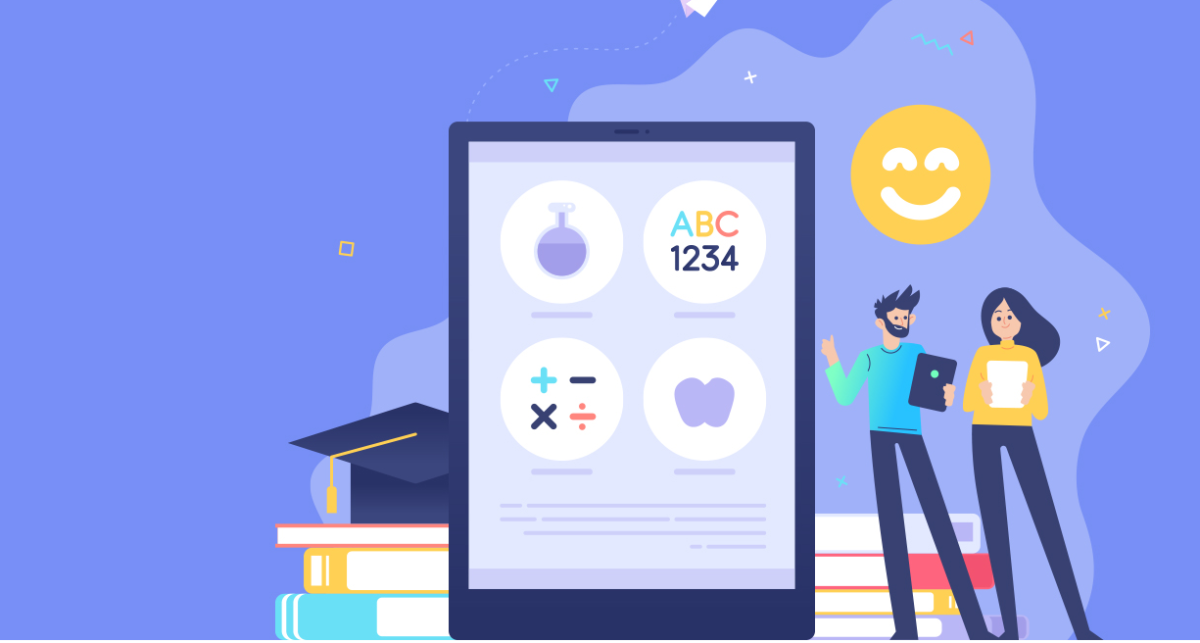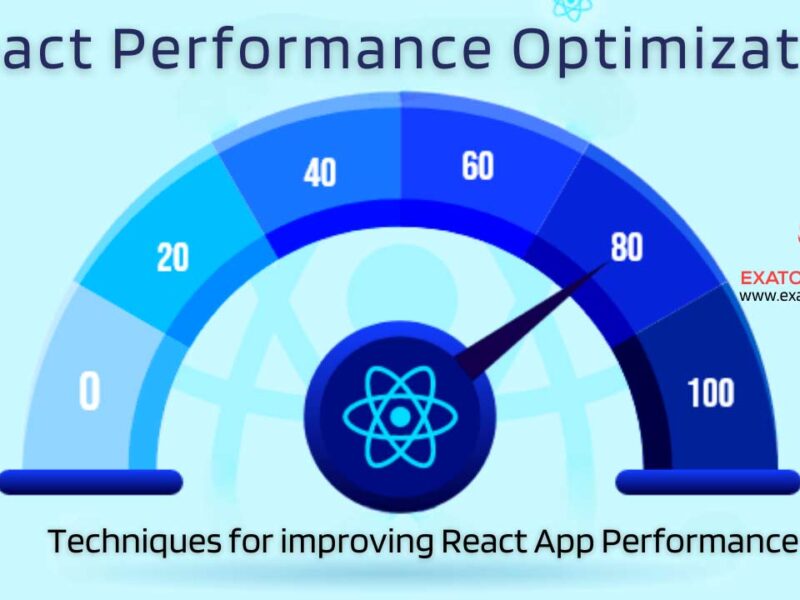The current educational environment demonstrates a tremendous growth in the resources accessible for academic purposes. One example is the creation of e-Learning mobile apps. These applications have been well appreciated by students and parents alike since their introduction due to the numerous benefits they provide. It also cannot be argued that, in an age when most students choose to spend significant amounts of time on connected phones, educational mobile applications are a terrific way to make that time more productive. On the same hand, these applications are affordable to students, so they may utilize applications while worrying about the hefty tuition expense.
Growing Adoption of Academic Mobile Applications
People nowadays understand how to utilize smart gadgets, and these technologies play an important role in their life. As a result, there is no better moment than the present to introduce kids to this information (educational mobile apps) via using mobile devices. These online e-Learning systems are incredibly enticing and will capture the learners’ full attention. They provide the simplest methods for pupils to study. They enable users, for example, to keep essential papers online, complete assignments on the move, locate tutorials and attend them online, and much more. It is no exaggeration to argue that mobile development has revolutionized the education business by delivering education in everyone’s pockets.
This article will cover a variety of topics related to educational or e-Learning mobile applications, including their features, the technology utilized, the expected development cost, and much more. But first, let’s look at the many sorts of educational applications.
Types of E-learning applications
There are five sorts of popular e-Learning apps:
Courseware
Some courses are specifically run by this sort of e-Learning software. Some lessons are in the video files that can only be accessed through the app.
Classroom resources
This program is mostly used in classrooms. The course information is often presented on chalkboards or white monitors. It is commonly used in online classes.
Assessment software
These e-learning programs provide various examinations and quizzes to pupils. They can take these examinations to evaluate their expertise. The software will compute the students’ replies and then present a score to the app user.
Software for Reference
These applications are often designed for the genre of definitions and encyclopedias.
Software for specific educational purposes
These programs cater to specific markets such as typing instructors, driving exams, health, and medical software applications. The major goal of these applications is to be entertaining and fascinating since only in this way can they appeal to kids.
Who Can Benefit from e-Learning Mobile Apps?
Custom e-Learning solutions may be extremely advantageous for schools, universities, and coaching organizations. The reason for this is that these applications make the learning process more engaging for pupils.
In this manner, educational institutions may use this platform to create learning more enjoyable and enjoyable for their students. These applications may help not just educational institutions, but also the corporate sector, as corporations can utilize e-Learning apps to teach their staff, increase volunteer involvement, and cut training expenses.
What Are the Advantages of Mobile e-Learning Apps?
There are several benefits to mobile learning, and we have highlighted a number of them below.
- e-Learning mobile applications enable users to learn on their tablets and smartphones by employing podcasts, lectures, and other processes. As a result, they make the learning process fairly adaptable for students.
- Mobile e-learning systems have greater completion and retention rates. They provide the information succinctly. As a result, students can complete the course and go on to the next.
- Students frequently lack cooperation; nevertheless, these m-learning applications provide collaborative learning through a web-based learning community within the app.
- E-learning applications increase engagement since students may access them-learning at any time and from any place. As a consequence, students/learners may stay on pace with their instruction regardless of location, resulting in much fewer dropouts.
- Multi-device compatibility is one of the most important advantages of e-Learning mobile apps. Students can use their cell phones, tablets, laptops, and desktop computers to access the same course.
- These applications also enable parents to monitor their children’s academic achievement in schools and institutions. They may secure their child’s progress and development in this manner. Typically, the reports read by parents include Time spent preparing, Exam preparation, comprehension issues, and so on.
What is the functionality of the E-Learning Mobile App?
The e-Learning mobile app is mostly used by four people. They are Pupils, Professors, Parents, and the Super Administrator. As a result, the software will behave differently for each user.
For Students:
Students are the intended audience for e-learning programs such as udemy. As a result, the entire business strategy depends on them. A student must register for the app by providing appropriate personal information. The following step is to select the desired course. A student can enroll in many programs and pay for each one separately. The course content and notes stay within the app and are accessible to the student at any time. A user can also create a profile to examine her registered courses and progress.
For Parents:
Not all e-learning business models include a parent app or need parental login. If the learner is too young, the guardians can log in and enroll their child in the classes. Parents can constantly keep track of their children’s academic development.
For Educators:
Teachers benefit from specific advantages provided by e-learning apps. Teachers can register for the application as teachers. They can create and offer their own courses to students.
A directorate-general has complete authority over all app activities. An administrator has able to handle users (teachers, students, and parents) and monitor information such as total earnings, current unique visitors, the number of active courses, and so on. An administrator has the authority to add, delete, and restrict any users who are determined to be in violation of the e-learning apps’ terms of service.
Problems that you may face while Designing an E-Learning App
While creating e-learning software for your company or customer, you may encounter the following difficulties.
1. Creation of high-quality material for simple access
Creating high-quality learning material is undoubtedly the most difficult job an app developer can face. The effectiveness of an e-learning mobile app is dependent on the quality of the information it provides to learners; hence, it is critical to provide well-researched and legitimate content to preserve your app’s reputation.
2. Disorganized Application Interface
The user experience is the most crucial part of any program since it allows users to access services. However, if you create a busy UI, this experience may suffer. As a result, you must focus on creating a clean, colorful, and fresh interface that allows the learner to get clear information in an enticing manner.
3. Inadequate Responsive Design
Adaptive app design is now the basic minimum need since it enables consumers to connect all services without excessive scrolling and tearing down. You must guarantee that the app is designed in such a way that the user does not have to navigate or zoom in to read the learning material.
4. Creation of High-Quality Video Content
Making great video content is difficult since it takes a lot of effort and time. You can film the video with an instructor, but that is insufficient. To make it interactive, you must change it and include several features like as audio, links, formatting, frames, suitable light effects, and so on.
5. The absence of mentor ongoing training
A training module, which includes a full-fledged mentor, is critical to the success of your software. You must offer programs that will assist instructors in expanding their expertise in many disciplines. It will allow professors to conduct lessons using chalkboards, video conferencing, text messaging, and other technologies.
6. Streaming difficulties are caused by a lack of load balance.
A lack of a good load balancing technique might degrade the app experience. To distribute user requests to the available servers, a load balancer is necessary. It would ensure that hundreds of students can access live streaming without buffering or other difficulties.
7. Inadequate Offline Learning Experience
When creating an e-learning phone device, make sure to include offline material as well. It will allow learners to access the information without using the online at any moment that is convenient for them. E-learning apps with offline content access might help your company generate additional money.
Features in E-Learning Solutions
Features for student
1. Simple Login
The login page of your app is the initial point of interaction between you and your users. Users will grow annoyed if checking in takes too long or involves the entry of personal information. Allow your users to log in quickly by allowing them to utilize their Google accounts. Your users enjoy however much time and effort they will save by using pre-populated profiles.
2. Exercising, Testing, and Quizzing
A good online learning program should incorporate tests and quizzes. Teachers may guarantee that their pupils have a firm understanding of the subject in this manner. It may also motivate the pupil to enhance their abilities. Students were able to evaluate their knowledge after each class.
3. Personalized Education
Instead of encouraging fans to view lectures and podcasts, differentiated instruction encourages students to study at their own speed. When building apps to customize the classroom experience, students’ learning styles might be considered.
4. Notifications through Push
The usage of push notifications is a major component of the program for keeping students interested and motivated while studying new topics.
A pushing notification will appear delivered to a user’s smartphone that is started by the app developer outside of the standard software distribution mechanism. At any time, targeted and customized alerts can be given. You may, for example, use push alerts to keep your pupils up to date on important events such as examinations and quizzes.
5. Messaging within the app
Teachers may use in-app messaging to motivate students to keep studying by giving them incentives, reminders, and nudges. Students may use in-app chat to ask questions immediately from the app. It is possible to choose a suitable time for both the student and the teacher so that the instructor can answer immediately. Whenever their professor responds to a message, students are alerted.
6. Social Media
Social media integration is frequently used in web-based educational programs to make studying more interesting for students. Essentially, the app will connect the user to other app users and allow them to share different thoughts and notions.
7. Distance Education
The ability to download content is a normal part that should be incorporated into each eLearning program. The “download” link that displays next to each course is one method. The “download all” option can also be used to download all lessons at once to the device.
Features for teachers
1. Account and profile configuration
The app allows users to edit their biography, update their account information, and reset their passwords.
2. Interactive courses
Instructors have to be able to use the app to plan and conduct live lectures, as well as upload video footage of such sessions. During live courses, students will benefit from real-time engagement with instructors via video conferencing.
3. Notifications within the app
If a student is having difficulty comprehending something, the app should tell teachers. Teachers can also opt to be alerted through notifications when their pupils make rapid progress.
4. Examine the remarks and reviews
Teachers may receive quick feedback and evaluation without leaving the app when designing courses. The instructor can use it to assess well how his or her pupils are doing and subsequently make modifications.
5. Problem-solving
Teachers want an online tutoring device that lets them to react to student inquiries quickly and simply. The eLearning app has the advantage of being accessible from nearly any location at any time. As a consequence, teachers will be able to answer students’ questions immediately.
6. Make a list of Assignments and Deadlines
Teachers must be able to enforce a deadline and an assignment. Students’ replies will be submitted.
Best Pricing Model before Estimating the Cost of an Educational App
- Cost-based pricing model
- Value-based pricing model
- Hourly pricing model
- Fixed pricing model
Advanced features of E-learning application Develop
1. Scoreboards
Keeping the venue competitive is an excellent method of motivating pupils. As a result, incorporating Leaderboards functionality may be a terrific incentive for students and other learners.
2. Quizzes and Evaluations
Making online quizzes and evaluations a component of your e-Learning mobile app might be a terrific idea. Create and share these quizzes with friends and classmates. They make it easy to keep the pace of each student’s performance. In an online quiz, all questions may be shown on a single page, but in an assessment, only one question can be provided per page. These online exams can be supplied as a solo written exam on a certain subject or topic, or they can be offered as part of a larger package.
3. Document Exchange
An online repository allows teachers to effortlessly exchange papers with users/learners/students. After users have uploaded and shared their documents, PDFs, slideshows, and spreadsheets, they can simply access them online, anywhere, and at any time using their mobile devices. Users can opt to open documents directly from the mobile web browser rather than downloading them to the device’s memory. They can also select to download the content to enable offline access.
4. Discussion Boards
Integrate this capability to encourage app users to engage. Users of the app can create new topics and contribute comments to existing ones in the Discussion Forums. This is also an efficient way for consumers to improve their learning experience since they may share sharing their knowledge and expertise with other students and scholars The administrator can regulate the posts to prevent spam.
5. Electronic commerce
Integrating e-commerce features into the app is an excellent method to increase its utility. Users may then purchase videos, books, courses, and other learning materials directly from the app. They don’t have to look elsewhere for them, which boosts overall engagement. Integrating e-Commerce capability, on the other hand, may do wonders for increasing revenue through this platform.
6. Streaming Audio/Video
This feature has the potential to enhance user involvement with your app significantly. Users will be able to stream lessons or live classrooms using engaging On again and Audio Broadcasting m-learning applications.
7. Notification through Push
An e-learning mobile app must continually deliver alerts to customers in order to maintain them up to speed on forthcoming classes, new video uploads, new content accessible, and a variety of other things. As a result, push notification capabilities can significantly improve the efficiency of an m-learning mobile app.
Conclusion
COVID-19 has altered the way we live and study. Many governments throughout the world have released new standards focusing primarily on social distance, making e-learning mobile app a growing trend today and in the future. The production of e-learning mobile apps is a vibrant business that is expanding at an unparalleled rate. It does have immense financial possibilities as well as a significant social motivation.
If you want to be a part of the E-Learning movement and create a one-of-a-kind education software, now is the time. You are welcome to contact our E-Learning specialists and discuss your concept. We can assist you in developing your concept into a competent and popular e-learning software that can improve the lives of instructors and students while providing unique value to consumers and generating significant cash for your business.



